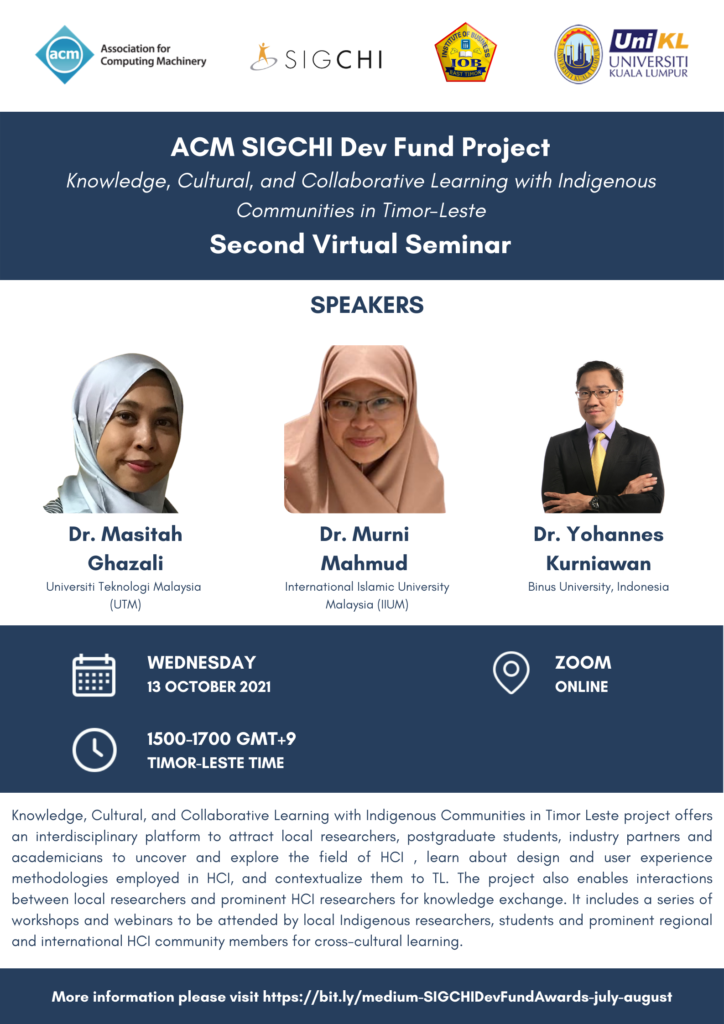Pembelajaran HCI secara langsung dan tidak langsung (Direct and indirect teaching and learning of HCI)
Speaking to the community of Timor-Leste, in Malay, I shared about how HCI can be taught and learned in two means: direct and indirect. I shared some of our experiences in directly designing the course syllabus at the higher institution, particularly at UTM, and the program with the rural community that I conducted a few years back which involved indirect teaching & learning of HCI. As proposed by Churchill et. al, the HCI education should be flexible, global and a living curriculum.
Guide for Successful Assoc. Prof. Application at UTM
Soft Computing Research Group (SCRG) invited Dr Anazida from IASRG and I from ViCubeLab to share our experiences in applying for Associate Professors. Applicant must aware of the latest criteria as per circulated by the UTM HR, be familiar with the latest version of the UTMHR system, and prepare the compulsory documents which may not be explicitly mentioned in advance when one was applying: (i) teaching portfolio, (ii) asset declaration, (iii) personal statement.
Making Impact with HCI
In this talk, I started off with a book that inspires me in a lot of ways. (1) I specifically emphasised the shift from UX to human values, and (2) I highlighted Malaysia’s timeline vs other parts of the world, that although the gap is noticeable (how far ahead vs where we are now), we can still try to make impact within the available framework in our current setting.
Persuasive Technology in Behavioural Change
This time I talked about the persuasive design/technology in behavioral change, reflecting on some of my work over the past 5 years or so. I summarised this as a Persuasive Spectrum. I first talked about this topic in 2019 during the first Fusion Symposium in Malacca. So this talk is an updated and revised version of the work.
Visualisation of Data & Information from Perspective of UX
Reflecting on several projects that I involved in, I emphasised on the UX aspect of visualisation. This can be achieved by considering both the visual design that supports the cognitive processes, as well by knowing the best way to visualise the type of data in hand – hence the matrix table.





